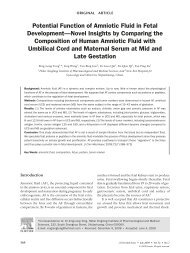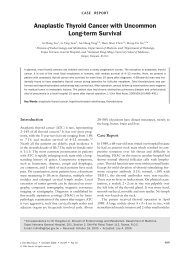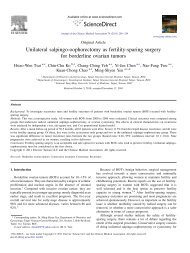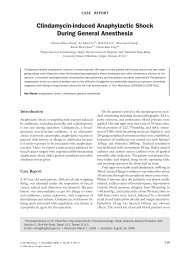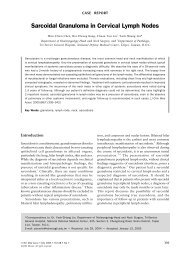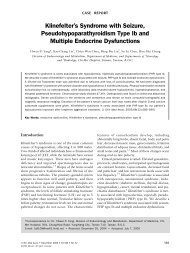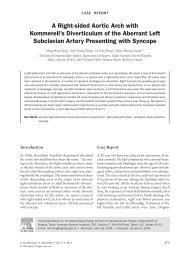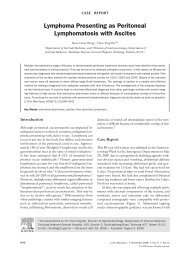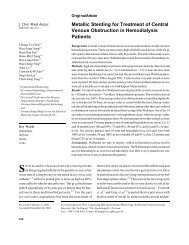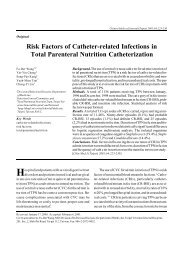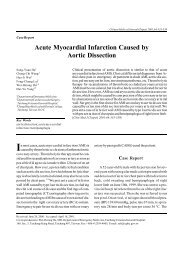Surgical Anatomy of Supratentorial Midline Lesions
Surgical Anatomy of Supratentorial Midline Lesions
Surgical Anatomy of Supratentorial Midline Lesions
Create successful ePaper yourself
Turn your PDF publications into a flip-book with our unique Google optimized e-Paper software.
diameter <strong>of</strong> the pericallosal artery at its origin was similar on both the right (average, 2.6 mm) and left (average, 2.5 mm) sides. The A2 segment<br />
<strong>of</strong> the pericallosal artery coursed in the subcallosal area, generally in an S-shaped configuration. The A3 through A5 segments coursed in the<br />
callosal sulcus in 60% <strong>of</strong> the hemispheres. In a further 32.5% <strong>of</strong> the hemispheres, they followed an irregular course, and at least one <strong>of</strong> the<br />
segments coursed in the cingulate sulcus. In the remaining 7.5% <strong>of</strong> the hemispheres, the A3 through A5 segments coursed in the cingulate sulcus<br />
and were never involved with the corpus callosum (Fig. 4, A-C). Furthermore, in 10% <strong>of</strong> the hemispheres, the A4 segment crossed the midline<br />
and supplied portions <strong>of</strong> the opposite hemisphere.<br />
FIGURE 4. Anatomic variations in the course pattern <strong>of</strong> the pericallosal artery. A, in 60% <strong>of</strong> the hemispheres, the A3 through A5 segments<br />
course in the callosal sulcus( CS). B, in an additional 32.5% <strong>of</strong> the hemispheres, they follow an irregular course, and at least one <strong>of</strong> the<br />
segments runs in the cingulate sulcus (figure shows three variations[ I-III]). C, in the remaining 7.5% <strong>of</strong> the hemispheres, the A3 through A5<br />
segments course in the cingulate sulcus( CS) and are never involved with the corpus callosum .<br />
In the instances where the A5 segment coursed in the callosal sulcus (65%), its posterior extension followed a cork-screw-like tortuousity,<br />
anastomosed with the posterior pericallosal artery in the splenial region, and formed the dense portion <strong>of</strong> the pericallosal pial plexus within the<br />
callosal sulcus (Figs. 5D, 10, and 11). Usually, some <strong>of</strong> the branches arising from this network circled around the splenium and joined the tela<br />
choroidea <strong>of</strong> the third ventricle, where they anastomosed with branches <strong>of</strong> the medial posterior choroidal arteries. In 5% <strong>of</strong> the hemispheres, this<br />
extension continued anteriorly as far as the foramen <strong>of</strong> Monro.



